Article
Oslo: Tomorrow Europe's Showpiece
Author(s):
Norway is a laid-back, no-nonsense uncomplicated new country - new compared to the rest of Europe. It also, arguably, has the highest standard of living in Europe with a trust for its future generations.
Photography by the authors
You might say that, among the Scandinavian capitals, Oslo doesn’t have the sophistication of Stockholm or the mystique of, say, Helsinki. You might say that if you thought for a moment Norway might care about your comments, but it does not.
really old
Norway — the size of California, with a population of 5 million — is a laid-back, no-nonsense uncomplicated new country. At least, new in terms of how old the rest of Europe is (although Britain and France are the only nations on that continent). And Norway has become supremely confident once it threw off the 400-year-old yoke of Denmark and, since 1905, shook off any oppression by Sweden.
“Tell us about Norwegians,” we say to a Norwegian friend.
Ireland
“We are down to earth, friendly, modest — even shy,” he replies. “And yes, before you ask, all that is because we are a young country! But we are a proud country. Norway and Iceland have more readers of books and print newspapers per head than in any European country. Norway and (a country the Vikings founded, by the way) were always the poorest countries in Europe — only Ireland sent more immigrants to the United States in the 50 years 1870 to 1920, even though one-third of the population of Norway went to America in that time.
“Things changed in the 1970s.” our friend Harald says (Harald evidently means “leader of a Viking army”). “We suddenly became filthy rich!”
Norway now, arguably, has the highest standard of living in Europe. Four percent of the income from its huge oil fields in the North Sea filters to governments, local and state, but the remainder goes into a trust fund for Norway’s future generations. The fund presently stands at around $150,000 per resident. But that money cannot be used today. It is for the country’s tomorrow.
This future can be seen today as we wander Oslo as a precursor to our Hurtigruten cruise up the west coast of the country. Oslo is undergoing massive change. Construction cranes are everywhere even in winter. Vast underground tunneling is moving traffic below the harbor areas. Most of the downtown will become pedestrian, and boy, do the Norwegians enjoy walking and other exercise!
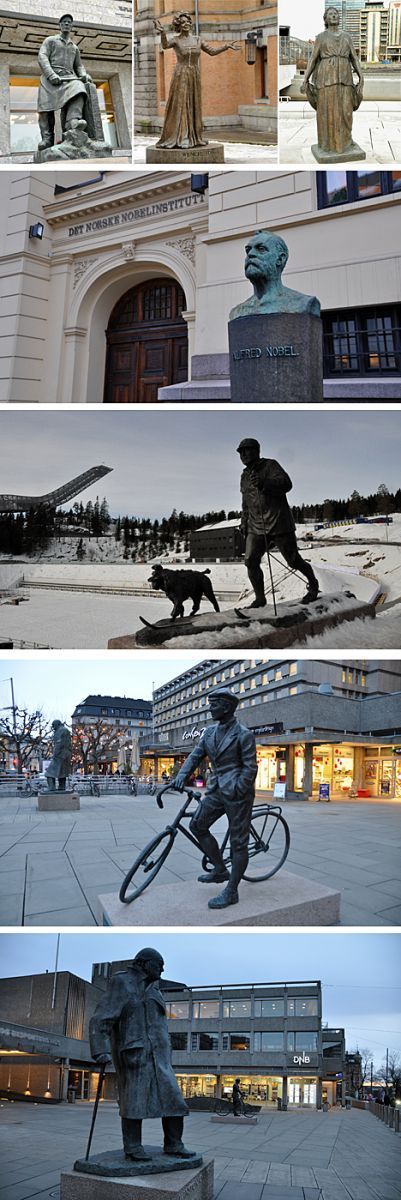
As you walk this city you see, as always in any city, statues. From a series of workers’ statues at the rear of Old City Hall to ones of Norway icons: actress Wenche Foss, and opera singer Kirsten Flagstad. Ironic that a country that has its own great composer, Edvard Grieg, and loved Adolf Hitler’s favorite composer, Richard Wagner, so much was so cruelly treated by the Germans in World War II.
Other statues would include Alfred Nobel’s bust in front of the Nobel Peace Center and the statue of King Olav V, the present king’s father, which demonstrates the enthusiasm for cross-country skiing Norwegian Royalty has always shown for sports. This monarch actually won an Olympic Gold in 1928 for sailing.
Two touching statues have to be tracked down, but, unfortunately, are side by side in an obscure part of town: Gunnar Sonsteby, the most decorated man in Norway, stands by his bicycle as the young man of 25 years who saw to his horror the Germans barging into Oslo before he slipped into the forests to become one of the heads of the Resistance. Next door, dour as ever, lurks our hero Winston Churchill.
Visitors who find statues comforting because they may last forever or might reveal an unknown secret will be fascinated to find their way to a park devoted to the lifetime achievements of one sculptor. Gustav Vigeland’s raw materials were supplied by this new country — anxious perhaps to have an identity.
“The park contains 600 nude statues: nude because clothes would have dated his work,“ says our guide, Marit Utaker. You can wander the park yourself, but it helps to have a guide to draw your attention to details, although she declines to over explain. “Some things you have to work out yourself.”

The statues in Vigeland Park were created from 1921 to 1943 and show groups of families and children, though the sculptor had renounced his own family and two children in his devotion to his work. All statues lead to the granite obelisk, the Monolith: 121 subjects ascending a 240-ton piece of granite. A short three-minute film tries to explain the park.
A member of our tour asks our guide the question most were wondering: Are there elements of human sexuality to the works?
“You have to find that out for yourself,” is the reply.
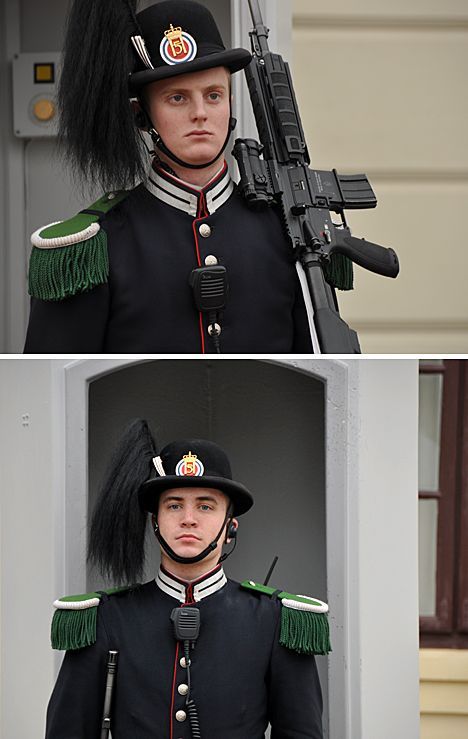
Visitors now ready to see and photograph humans can head for the Royal Palace in the town center or to the Akershus Castle to photograph the sentries dressed in the paradox of old world uniforms with modern weapons near the Armed Forces Museum. Exhibits in this museum remind visitors that while the United States faced down the Soviet Union in the Cold War, the rest of the civilized world waited for the fall-out.
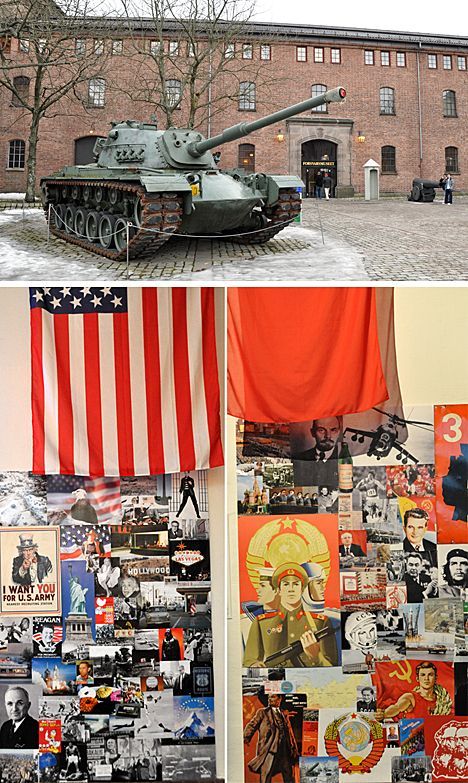
A favorite museum for many visitors who know Norway’s glorious maritime history would include the Kon Tiki Museum, which has both Thor Heyerdahl’s raft and his Ra ship. What a man — don’t you love Norwegians! There are other museums to Norway’s ocean history but its famous Viking Ship museum really requires a separate story.
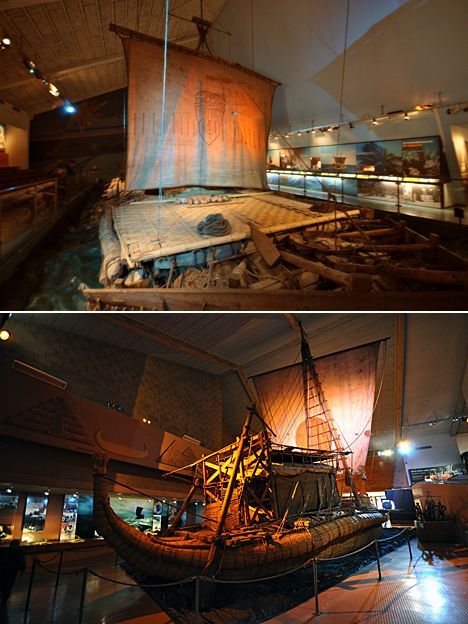
It is winter in Oslo and time is limited before passengers head for a port to board the Hurtigruten cruise along the coast of Norway but — even in this brief time — the country shows its backbone and its diversity. Even as tourists hurry in the approaching darkness to return to their hotel, they notice locals strolling nonchalantly as they shop.
jegerkirsjfenger
In the Old Town Hall a mural attempts to display the horror of being invaded by the might of the Third Reich. Paradoxically a 1793 German hunting sword, a , was used to cut the cake for the King Harald of Norway at his 75th birthday this year.
Norway forgives. In fact after the recent acts of terrorism in Scandinavia, the prime minister of Norway declared, “We will answer terrorism with roses.”
T
his is, after all, the home of the Nobel Peace Prize. And now 20% of Norway’s population is immigrant, and the country has more mosques than churches.
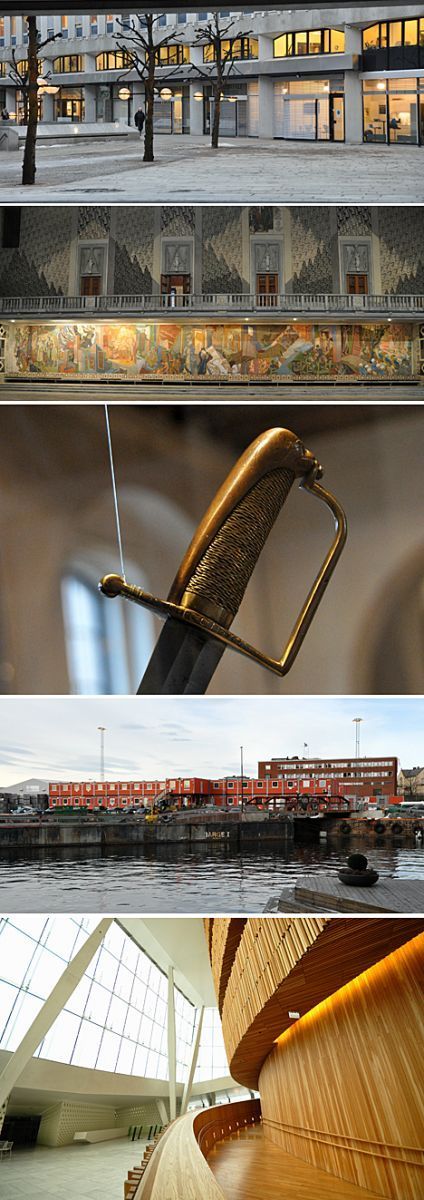
Yet Norway and its office in the United States, Innovation Norway, faces its future confidently. The old shipbuilding harbor in Oslo has so many new buildings going up that locals call the area “Bar Code.”
The architecture of the new opera house, both inside and out, is inspiring. Inspiring may not be the word used by the musicians. The orchestra plays 15 feet below sea level in this Space Age-celebrated building.
The Man Who Cried Orange: Stories from a Doctor's Life.
The Andersons, who live in San Diego, are the resident travel & cruise columnists for Physician's Money Digest. Nancy is a former nursing educator, Eric a retired MD. The one-time president of the NH Academy of Family Practice, Eric is the only physician in the Society of American Travel Writers. He has also written five books, the last called




